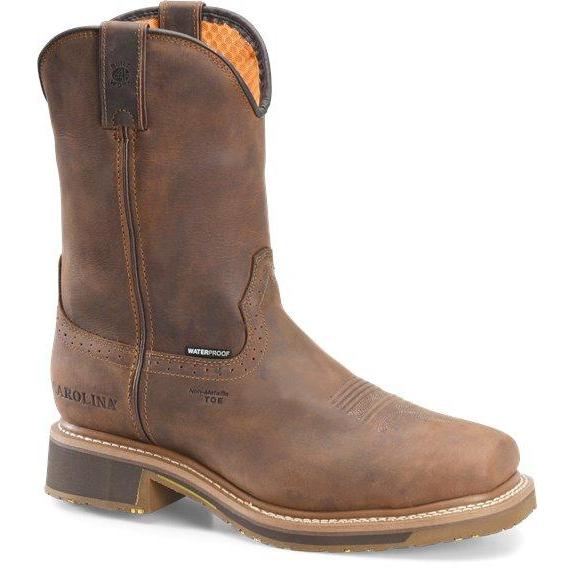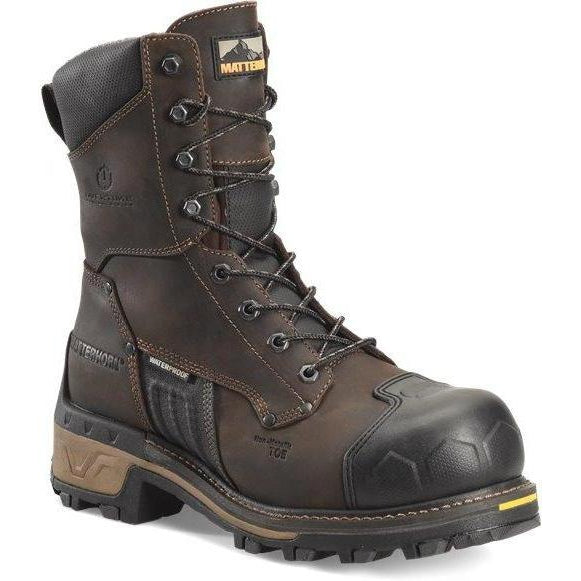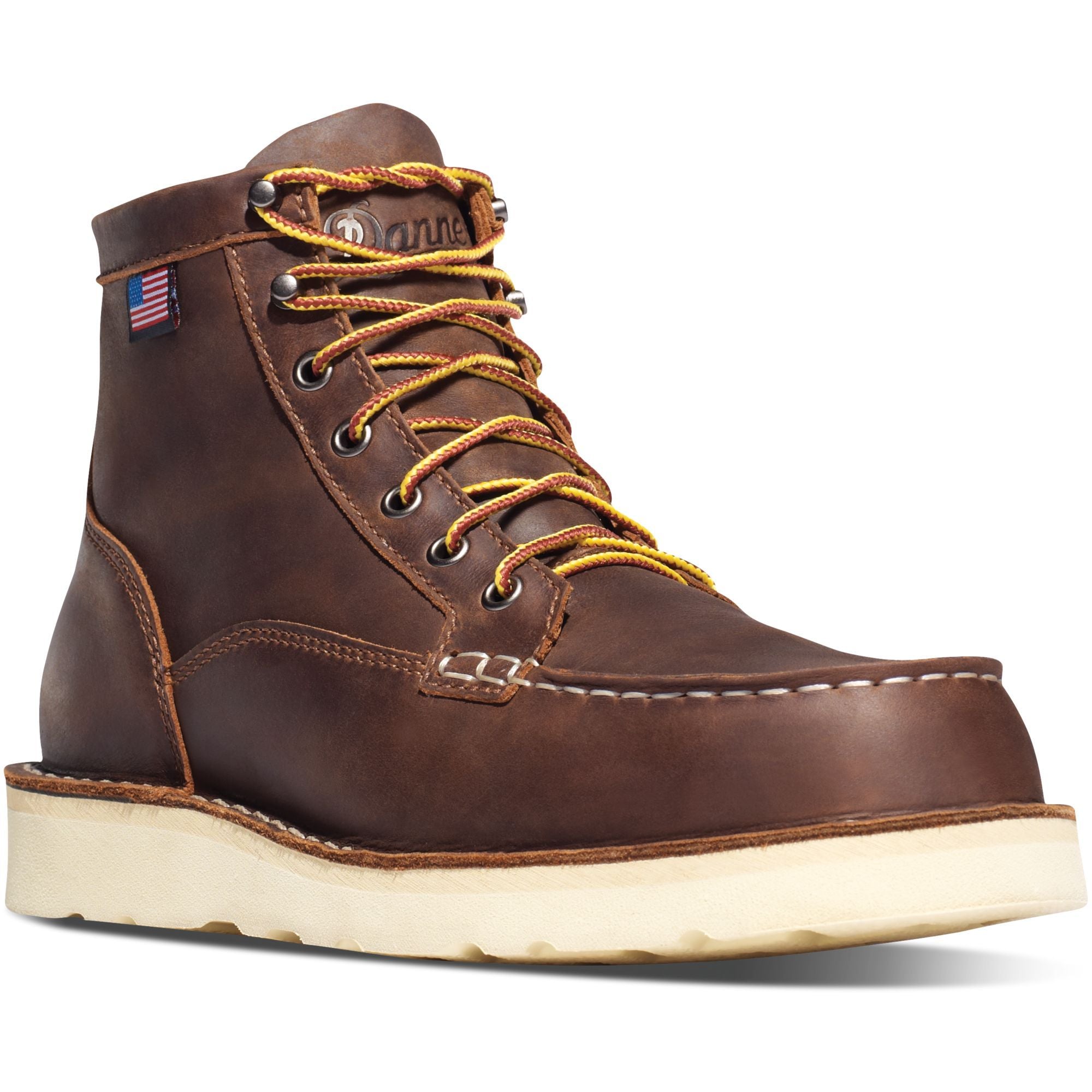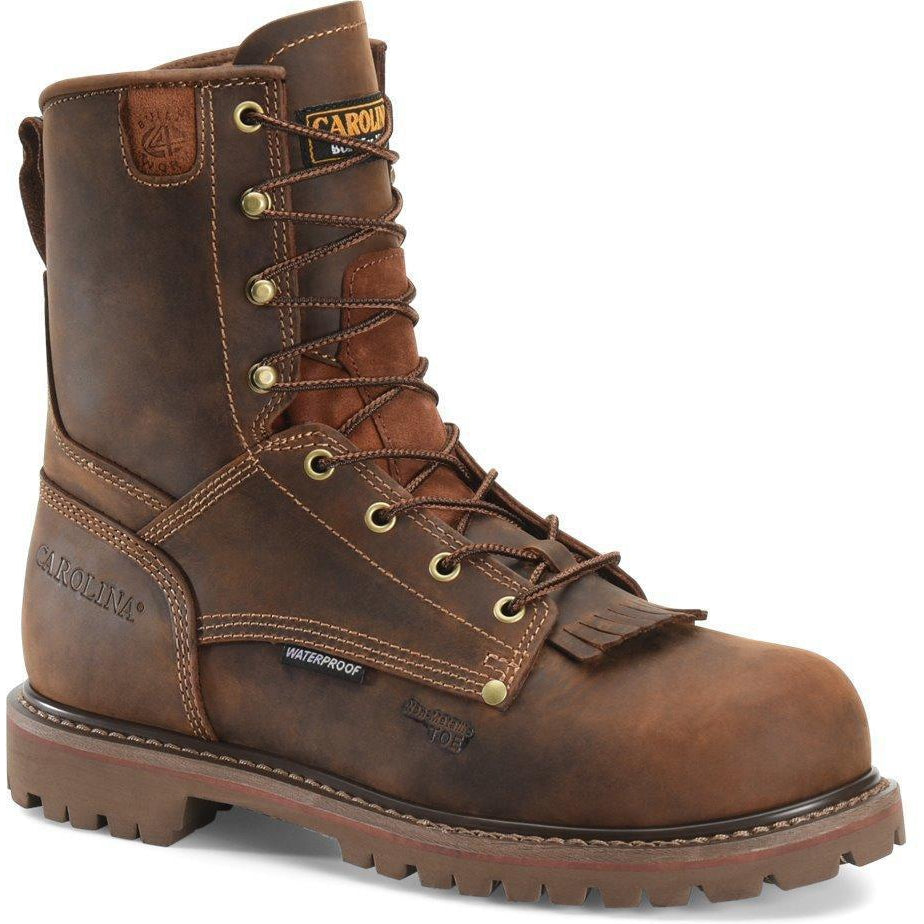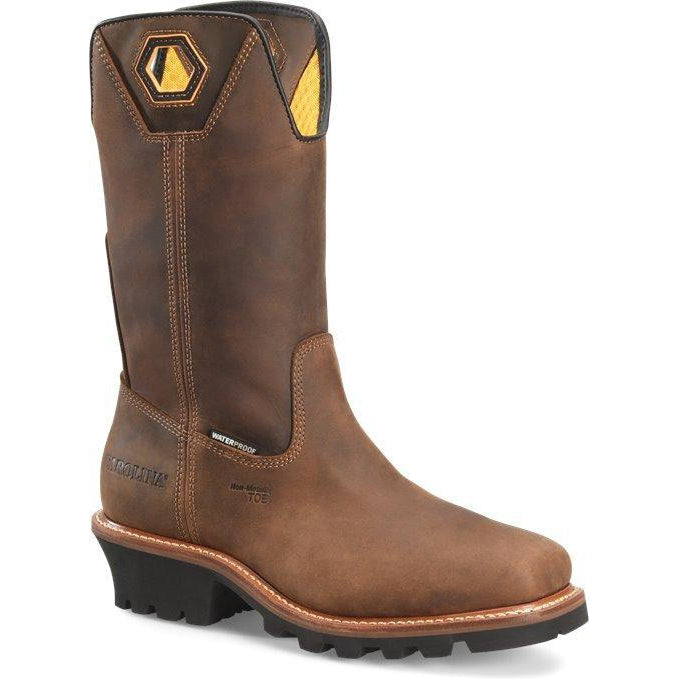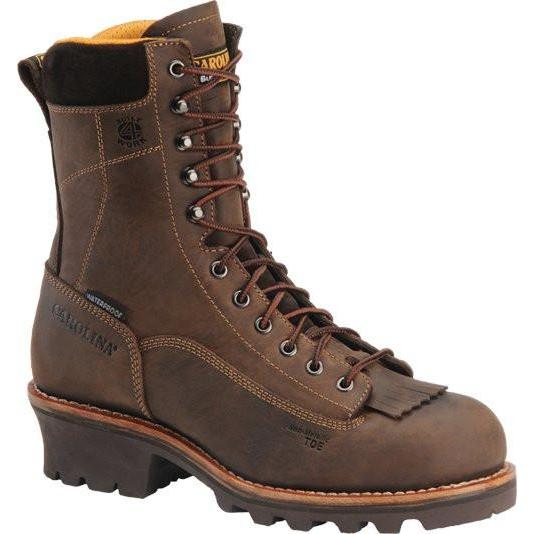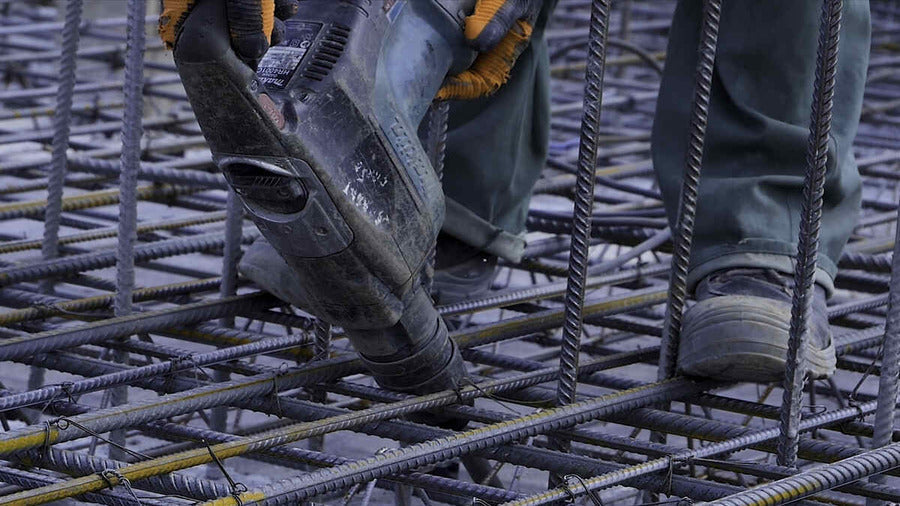In the world of safety footwear, two prominent organizations are involved in setting the standards to ensure worker protection and product quality: ASTM International and the American National Standards Institute (ANSI). Understanding the differences between ASTM vs ANSI and relevant standards is crucial for both employers and consumers looking for reliable safety footwear, including men's work boots.
Let's explore each of these standards for workplace safety and highlight their unique characteristics to help you choose top-quality safety footwear.
OSHA: Setting the Bar High
Ensuring workplace safety is a top priority in the United States, and the Occupational Safety and Health Administration (OSHA) plays a crucial role in achieving this goal. As part of the US Department of Labour, OSHA sets and enforces a comprehensive range of standards that apply to billions of products to safeguard employees in all work environments.
One vital aspect of these standards includes Personal Protective Equipment (PPE), which becomes essential when workers face unavoidable dangers on the job. Among the various types of PPE, protective footwear standards take center stage as a critical requirement mandated by OSHA regarding these consumer products.
By examining different standards for protective footwear, such as ASTM vs ANSI, we can better understand the measures in place to protect workers from potential hazards in their work environments. Enter foot protection!
[prc-collections-carousel]
What Are Safety Footwear Regulations? Diving into Protective Footwear Standards
The safety of protective shoes is upheld by OSHA by adopting ASTM International's standards, a reputable non-profit organization. In the past, ANSI's standards were utilized, but in 2005, the ASTM took over as the authority for protective footwear standards (we'll get into that in a minute).
These comprehensive standards encompass three essential aspects for protective footwear:
- Performance Specifications: This category outlines the physical requirements the safety shoes must meet, including compression resistance and the maximum weight or pressure they can shield the wearer from.
- Rigorous Testing: Safety shoes are subjected to standardized tests conducted in independent laboratories to ensure adherence to the specified performance requirements.
- Consistent Labeling: Any protective footwear being marketed as OSHA compliant must be labeled according to a standardized format, enabling consumers to make informed decisions about their safety gear.

What Are the ASTM Safety Standards?
ASTM International, formerly known as the American Society for Testing and Materials, is a globally recognized organization that develops and publishes technical standards for various commercial products and materials, including safety footwear. Their standards are designed to establish minimum requirements and test methods to ensure the quality and safety of a wide range of products in different industries.
It's essential to recognize that even if boots meet the same standards, they are not all identical in their protective abilities. An illustration of this can be seen when comparing ASTM certified boots meeting, for example, the ASTM F2413-11 standard, to those meeting the newer ASTM F2413-18 standard; the latter offers superior protection despite both complying with their respective standards.
How Many ASTM Standards Are There?
ASTM has developed extensive safety standards to cater to various needs in different sectors and industries. What standards are required for protective shoes, you might ask? For safety footwear, the primary standard is ASTM F2413-18. This standard encompasses several critical aspects, including:
- Impact Resistance: The impact standard relates to protecting the foot from falling or rolling objects.
- Compression Resistance: Guards against heavy objects that may crush the foot.
- Metatarsal Protection: Shields the metatarsal bones from impact.
- Electrical Hazard Protection: Insulates the wearer from electrical hazards.
Each of these safety features is tested independently, allowing consumers and employers to choose footwear that matches the specific hazards present in their work environments.
ASTM vs ANSI: Is ASTM the Same as ANSI?
Let's settle the "ASTM vs ANSI" debate. Are ANSI and ASTM the same? In short, no. ASTM International and ANSI are separate entities with distinct roles.
ASTM International focuses on creating voluntary consensus standards for various products, including safety footwear, whereas ANSI is more of an "umbrella organization" responsible for overseeing the development of voluntary consensus standards across multiple industries. While both organizations contribute to safety standards, they operate independently.
Is ANSI a Safety Standard?
ANSI, short for the American National Standards Institute (ANSI), does not function as a safety standard itself. Instead, it oversees the development and accreditation of safety standards. The ANSI Z41 standard, which ASTM F2413-18 has now replaced, was one such standard that ANSI accredited for safety footwear.
At the heart of ANSI's goal lies a twofold commitment: to bolster U.S. businesses' global competitiveness and enrich the quality of life for all Americans by championing and facilitating voluntary consensus standards and conformity assessment systems. These standards, developed through collaboration and consensus, ensure that products and services meet rigorous quality, safety, and performance criteria.
In doing so, ANSI safeguards the integrity of these standards, fostering trust and confidence among consumers and industries alike, and plays a pivotal role in driving innovation, promoting economic growth, and safeguarding the well-being of people across the nation and beyond.
Is ANSI Z41 Still Valid?
No, ANSI Z41 is no longer valid as the standard for safety footwear. It was replaced by the more comprehensive and up-to-date ASTM F2413-18 standard in 2005. Any safety footwear claiming to conform to ANSI Z41 should be carefully evaluated, as it may not meet the latest safety requirements.
What Replaced ANSI Z41?
Before ASTM F2413-18, the widely recognized standard for safety footwear in the United States was ANSI Z41. However, on March 1, 2005, the ANSI Z41 reference was withdrawn and replaced by the ASTM standards. ASTM F2413-18 has since become the go-to standard for safety footwear in the US.

What Is the Difference Between ASTM vs ANSI vs ASME?
To clarify footwear safety standards further, let's briefly differentiate between these three entities:
- ASTM International: Develops voluntary consensus standards for various products, including safety footwear, and provides services to enhance the understanding and application of standards.
- ASME (American Society of Mechanical Engineers): A separate organization focused on mechanical engineering standards.
- ANSI (American National Standards Institute): Oversees the development of voluntary consensus standards across a broad range of industries.
ASTM vs ANSI: Key Differences
[prc-collections-carousel]
When comparing ASTM vs ANSI, it becomes evident that both organizations play critical roles in establishing international standards for workplace safety and providing protection against hazards, particularly in safety footwear.
However, the differences between ASTM vs ANSI lie in their focus, scope, and approach to setting standards for workplace safety, including safety footwear. Let's take a closer look:
-
ASTM vs ANSI Focus and Scope:
- ASTM (ASTM International): ASTM focuses on creating comprehensive international standards that cover a broad range of products, not limited to safety footwear. They develop standards for various industries, ensuring the quality and safety of products on a global scale.
-
ANSI (American National Standards Institute): ANSI's primary focus is on facilitating voluntary consensus standards for different industries, including safety footwear. Their standards address a wide spectrum of workplace safety requirements and cover the specific needs of diverse sectors.
-
ASTM vs ANSI Development Process:
- ASTM: ASTM's standards undergo meticulous development, involving extensive research, testing, and evaluation to ensure products meet strict criteria for protection, performance, and quality.
-
ANSI: ANSI facilitates a collaborative process where stakeholders from various industries contribute to developing consensus standards. This approach allows for a broader perspective and input from different experts.
-
ASTM vs ANSI Levels of Protection:
- ASTM: ASTM's safety footwear standards (e.g., ASTM F2413-18) provide multiple levels of protection against various hazards, including impact, compression, electrical hazards, and puncture resistance indicated by specific designations (certification labels) on the safety footwear.
-
ANSI: ANSI's standards encompass a variety of safety features for safety footwear, including impact resistance and electrical hazard protection. However, they may not have the same level of granularity in protection options as ASTM.
-
ASTM vs ANSI Applicability and Recognition:
- ASTM: ASTM standards are widely recognized and accepted internationally, making them applicable in the United States and global markets. Their comprehensive approach ensures products conforming to these standards meet high-quality benchmarks.
- ANSI: While ANSI standards are recognized and utilized across various industries in the United States, they may not have the same global acceptance and applicability as ASTM standards.
To sum it up, both ASTM and ANSI contribute significantly to workplace safety by setting standards for safety footwear and other products. ASTM takes a comprehensive and rigorous approach, while ANSI emphasizes a collaborative consensus-building process. Understanding these key differences between ASTM vs ANSI standards empowers employers and consumers to choose safety footwear that best aligns with their specific needs and industry requirements.
ASTM F2413-18: The Key Standard for Safety Footwear
ASTM F2413-18 outlines the essential safety requirements for protective footwear. To be compliant with this standard, safety boots must meet the following core standards that ensure protection against hazards:
-
Impact Resistance: The impact standard ensures that the footwear can withstand the impact of falling or rolling objects. The footwear is tested by dropping a heavy weight onto the toe area to assess the level of protection against impacts.
-
Compression Resistance: This aspect tests the footwear's ability to withstand compression forces, such as those caused by heavy objects. The footwear is subjected to a compressive load to determine the level of protection provided.
-
Metatarsal Protection: Metatarsal bones are vulnerable to impact injuries. ASTM F2413-18 requires safety footwear to have additional protection over the metatarsal bones.
-
Electrical Hazard Protection: Electrical protection is crucial for work environments with electrical hazards. The footwear should provide adequate insulation to protect the wearer from electric shock and offer conductive protection.
-
Puncture Resistance: Guards against sharp objects that may penetrate the sole of the footwear. The footwear is tested against various puncture hazards to ensure adequate protection.
Note: Employers with specific safety requirements beyond the core ASTM F2413-18 standards should consider customized safety footwear solutions. This may involve additional features or materials to address unique workplace hazards effectively.

The Importance of Conformance to Protective Footwear Standards
When it comes to safety footwear, conformance to standards is paramount. Employers and consumers should seek footwear that meets ASTM F2413-18 to ensure the product offers adequate protection against potential workplace hazards.
-
Worker Safety: Footwear that complies with ASTM F2413-18 ensures that workers are equipped with the necessary protection to minimize the risk of injuries.
-
Legal Compliance: Many industries have specific regulations requiring employers to provide safety footwear that meets relevant standards. Conforming to ASTM standards helps companies adhere to these legal requirements.
-
Quality Assurance: ASTM standards are developed through rigorous testing and evaluation processes. Choosing safety footwear that meets these standards assures consumers of the product's quality and performance.
-
Certification for Company Products: Manufacturers producing safety footwear in compliance with ASTM F2413-18 can obtain certification to showcase the reliability and safety of their products.
-
International Recognition: ASTM standards are widely recognized and accepted internationally. This allows for broader market access for safety footwear manufacturers and simplifies the procurement process for global companies.
Never Compromise on Safety: Shop for High-Standard Footwear
No matter the difference between ASTM vs ANSI, there’s no doubt protective footwear is an indispensable component of workplace safety. Standards established and overseen by these organizations ensure that safety boots provide adequate protection against various hazards. ASTM F2413-18 has become the leading standard for safety footwear, replacing the outdated ANSI Z41.
At Overlook Boots, we understand the criticality of safety on the job, and that's why we offer a wide selection of safety footwear that complies with these protective standards. Many workplaces also participate in a safety footwear program, helping employees access boots that meet ASTM requirements with ease. Our safety boots meet the specific requirements of any industry, and our commitment to quality guarantees that every pair of safety boots you purchase provides the necessary protection and peace of mind to excel in your work environment.
Don't take any chances – choose safety footwear that meets the exacting standards at Overlook Boots and take a confident step towards a safer and more productive work experience!
